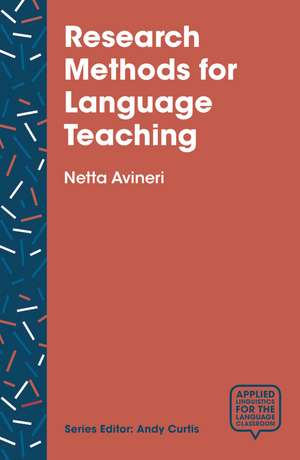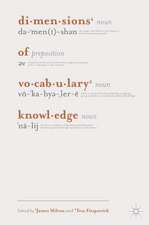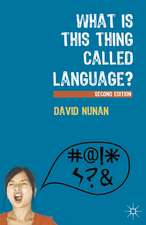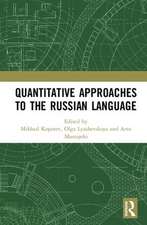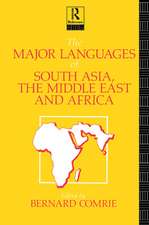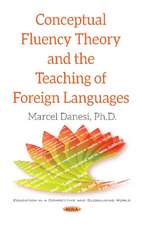Research Methods for Language Teaching: Inquiry, Process, and Synthesis
Autor Netta Avinerien Limba Engleză Paperback – 26 ian 2017
Preț: 183.70 lei
Preț vechi: 221.21 lei
-17% Nou
Puncte Express: 276
Preț estimativ în valută:
35.16€ • 36.00$ • 29.24£
35.16€ • 36.00$ • 29.24£
Carte disponibilă
Livrare economică 26 februarie-12 martie
Preluare comenzi: 021 569.72.76
Specificații
ISBN-13: 9781137563422
ISBN-10: 1137563427
Pagini: 236
Dimensiuni: 129 x 198 x 15 mm
Greutate: 0.27 kg
Ediția:1st ed. 2017
Editura: Bloomsbury Publishing
Colecția Red Globe Press
Locul publicării:London, United Kingdom
ISBN-10: 1137563427
Pagini: 236
Dimensiuni: 129 x 198 x 15 mm
Greutate: 0.27 kg
Ediția:1st ed. 2017
Editura: Bloomsbury Publishing
Colecția Red Globe Press
Locul publicării:London, United Kingdom
Caracteristici
Part of a ground-breaking series that uniquely links the knowledge of applied linguistics to the practical needs of language teachers in the classroom
Notă biografică
Netta Avineri is Assistant Professor of TESOL/TFL at the Middlebury Institute of International Studies at Monterey (MIIS). She serves as the MIIS Intercultural Competence Committee Chair, co-founded the MIIS Intercultural Digital Storytelling Project (sites.miis.edu/idsp), and is academic co-director for the Center for Social Impact Learning's Ambassador Corps international internship program.
Cuprins
Introduction Section I: Inquiry 1. How to ACE the Research Process 2. The Noun and the Verb of the Literature Review 3. Research Questions and Research Design:Concretizing Inquiry 4. Research Ethics: Reasons, Roles, Responsibilities,and Relationships sSection II: Data Collection 5. Making Questionnaires Work for You 6. Interviews, Focus Groups, and Reflections 7. Case Studies, Ethnography, and Visual Data 8. Transcription: Process and Product 9. Approaches to Collection of Quantitative Data Section III: Data Analysis 10. Interpretive Analysis of Qualitative Data 11. Approaches to Analysis of Quantitative Data Section IV: Bringing It All Together 12. Arguments, Implications, and Communities of Practice
